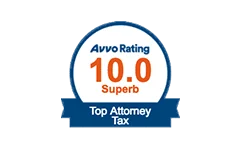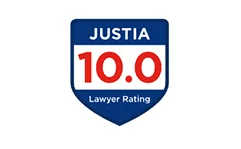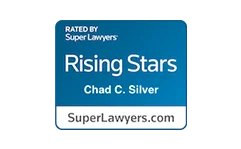Easy Instructions For Filing A Schedule C Tax Form

Starting a small business can bring you many benefits, like greater flexibility and control over your work. Along with those, however, are the small business tax implications: You will need to file Form 1040 Schedule C, Profit or Loss from Business, if you are an independent contractor.
The IRS Schedule C Tax Form is used by sole proprietors to report their income or losses from operating their business. The IRS states that a business will qualify if the primary purpose is to earn income or make a profit and if the business owner is continuously and regularly involved in the activity.
This guide will provide everything you need to know about the Schedule C Tax Form and simple instructions for getting it done.
Who Needs to File a Schedule C Tax Form?

Schedule C is used by sole proprietors, also known as individual entrepreneurs. You qualify if you own an unincorporated business that you run by yourself. Taxpayers who own multiple qualifying small businesses will need to file the Schedule C for each. These types of businesses file Schedule C:
Some LLCs
Limited Liability Companies (LLCs) owned and operated by a single member qualify to submit Schedule C. LLC partnerships with two or more members do not.
Independent Contractors
Self-employed individuals who earn income as a contractor and are not regular employees must complete Schedule C when filing their annual tax returns.
Freelancers or Gig Workers
Freelancer or gig workers are independent contractors and thus need to report on Schedule C.
More and more people across the nation are becoming freelancers, whether to earn extra income or to avoid the traditional office job. All such taxpayers need to know what Schedule C is and how to complete it properly.
How to Complete the Schedule C Tax Form (10 Steps)

All individual taxpayers will complete Form 1040 to file with the IRS each year. Because Schedule C is used only by sole proprietors, you may not be sure how to complete it and what you have to report on this document. Here are 10 simple steps to complete and file Schedule C:
1. Gather Your Records
Before you begin figuring your taxes, make sure you have all the records you’ll need. This includes all tax forms from entities that paid you and lists of your business expenses for the year. Expenses may include business equipment, miles driven if you use your vehicle, and meal expenses.
2. Report or File Forms 1099
Your clients before 2020 reported income paid to you on Form 1099-MISC. Now you will likely receive Form 1099-NEC. Each entity that paid you more than $600 last year should send you this form with the total amount paid. Businesses that paid contractors will need to file these forms for each person they paid.
3. List Cost of Goods Sold
Schedule C Part III is for reporting the cost of goods sold, which includes business materials and supplies, labor costs, purchases, and other costs. This section should be filled out before any other section on Schedule C.
4. Report Business Income
You will next go back to Part I to report your gross income. This is what you made minus the cost of goods sold, so it is important that you figure your cost of goods sold first.
5. List Business Expenses
Next is reporting your expenses. This should be simple if you’ve already gathered all your receipts and have categorized everything. Expenses can often be the most challenging part of Schedule C. It may help if you use accounting software to track transactions.
6. Calculate Vehicle Expenses
If you use your vehicle for your business, you will multiply your business mileage by 57.5 cents to figure your mileage deduction.
7. Calculate Meal Expenses
You can only deduct 50% of meal expenses from 2020 related to your business.
8. Calculate Your Home Office Deduction
Any home office that is solely and regularly used for your business may qualify you for the home office deduction.
9. Calculate Net Profit
Calculate your net profit or loss after your income and expenses are completed, and report that on the first page of Form 1040 under line 8a. This amount is reported on Schedule 1 and Schedule SE as well.
10. File Your Tax Form
You are then ready to file Schedule C, which will be submitted with the rest of your applicable tax forms. You can either file electronically using a tax preparation software or send your return through the regular mail to the IRS.
This info on Schedule C should enable you to fill it out properly and complete your taxes in no time. It’s important to keep in mind that expenses may vary depending on the type of work you do. A business tax attorney can help with questions about expenses or other intricacies of Schedule C.
Common Mistakes When Filing Schedule

You always need to be cautious that your information is correct and that the form is being completed properly, as with any tax form you submit. This can be especially challenging if your business is new and it’s the first time you’re filing taxes this way. Here are some important reminders when completing Form 1040 Schedule C:
Self-employment tax preparation can quickly become complicated with all the extra requirements. Working with a tax professional will ensure that you’re taking advantage of all deductions and credits while meeting your obligations.
Get Help Preparing Your Schedule C Tax Form

You may still have questions about your self-employment income. It is always a good idea to discuss your situation with a tax professional, especially when you are preparing a Schedule C Tax Form.
Reach out to Silver Tax Group to speak to a tax expert about filing your sole proprietor tax return. Our experienced tax lawyers and professionals can provide a range of tax advisory services to help you file documents correctly.





Free Consultation 24/7
Chad Silver
Attorney

Silver Tax Group Locations


777 South Flagler Drive
Suite 800 – West Tower
West Palm Beach FL 33401

4005 Guadalupe St
Suite C
Austin, TX 78751



